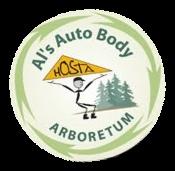




















Modern automobiles are technological marvels. As advancements in automotive technology have made cars more reliable than ever, drivers may feel as though vehicle ownership also is more hands-off than ever before.
Though it’s true built-in diagnostic technology is designed to alert drivers when issues arise, it can still benefit motorists to recognize when certain issues may arise.
Cars and the people who drive them are different, so mileage intervals are not always the best measuring stick for maintenance issues.
However, the following rundown can serve as a guidebook for drivers who want to know what to expect at various mileage intervals.
The experts at Auto Trader note that disposable engine air filters usually last between 15,000 and 30,000 miles. If it’s been around 30,000 miles since the engine air filter has been replaced, now is a good time to replace this important part, which prevents components like dirt and debris from getting into the engine. This also might be a good time to replace the fuel filter, which prevents debris from clogging fuel injectors.
It’s around this time that drivers may need to replace their vehicle batteries. Little-used vehicles may need a new battery much earlier, as lengthy periods of little or no use adversely affect the life expectancy of vehicle batteries.
Brakes also may need to be replaced around this time, as the experts at AutoZone note that most drivers get between two and five years out of a set of brake pads. If that sounds like a significant disparity, it is, and that’s because driver behavior is a significant variable affecting the life of the pads. Drivers who brake hard will likely need to replace their brake pads with greater frequency than drivers who brake slowly.
As noted, there is no uniform guideline governing when vehicle components will need to be replaced.
Hoses are a good example of that, as recommendations regarding when to replace hoses range from 50,000 to 90,000 miles. That’s a significant gap, but drivers can be on the safe side and start discussing the status of their hoses with their
• Continued on Page 7

Cars and the people who drive them are different, so mileage intervals are not always the best measuring stick for maintenance issues. However, there are guidelines for drivers who want to know what they might expect when their vehicle reaches certain miles.
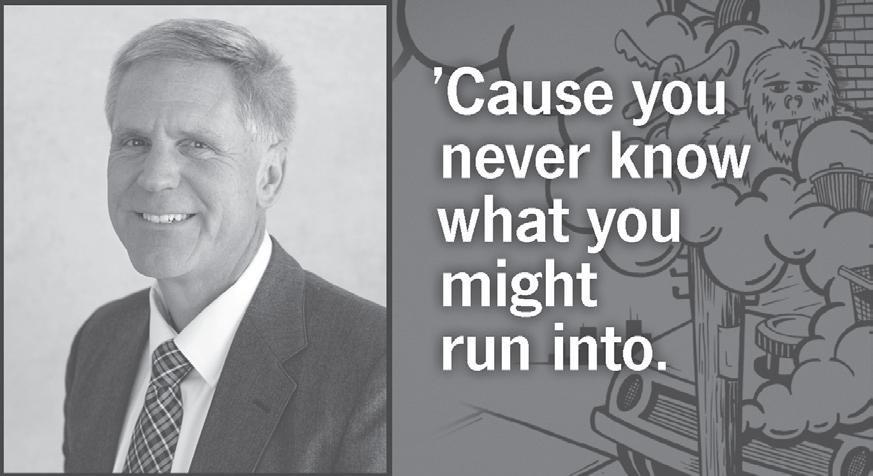
I’m your agent for that. Having me as your agent means having a real person there to help you when you need it. So when accidents happen, you have someone who can get the job done right, and right away. Like a good neighbor, State Fame is there.®
CALL FOR A QUOTE 24/7.

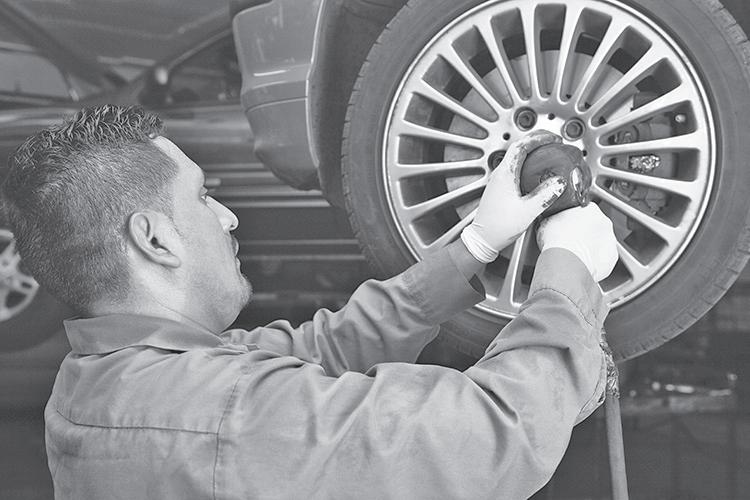
Inflation has been a hot topic for several years, as the cost of everything from groceries to gas to housing has increased considerably.
Cars are no exception to that phenomenon, and anyone who has purchased a new car over the last half decade likely experienced some sticker shock when they started their search for a new vehicle.
Data from Kelley Blue Book indicates the average cost of a new car was $37,590 in 2019. By 2023, the average cost had risen to $47,899. That marks an increase of more than 27 percent in a four-year period.
Cars are indeed a significant investment, which underscores the importance of vehicle maintenance. Maintenance is more than just tending to what’s under the hood.
Tires also require drivers’ attention, as aging, damaged tires pose a safety risk that also compromise vehicle performance. Tires are easily overlooked, but the following are signs tires need to be replaced.
Worn tread: The automotive experts at AutoZone note that tread depth is the most prevalent indicator that a tire needs to be replaced. AutoZone notes that tread depth should always be at least 2⁄32 of an inch throughout the tire. Depth should be measured across the tread and around the circumference. If the tread is at or below 2⁄32 of an inch, the tire should be replaced.
Bulges, gouges or cracks: Geico notes that a deflated tire bulges at the sides, and that can compromise the safety of everyone in the vehicle. AutoZone says bulges occur when air gets between the inner liner and outer rubber layers, which can happen after hitting a curb or driving over a sizable pothole. A gouge or cut that is deeper than the outer layer of the tire also necessitates replacement.
Poor grip: Drivers may be able to feel certain tire problems, including poor grip, while driving. In such instances, tires may feel as though they are slipping. The tire experts at Firestone note that low tread can reduce tire traction and cause wheels to slip, which may be more noticeable when accelerating from a stop or driving on wet roads. Drivers who feel their tires are slipping can test the tread and replace tires that are low.
Vibration: Vibration is another issue drivers may feel rather than see. And identifying the cause requires noting where the vibrations are felt. Geico notes that a feeling of vibration or thumping that feels like it’s coming from under the seats may indicate the tires are not balanced. A suspension issue could be to blame if the steering wheel feels like it’s vibrating. Either
• Continued on Page


Sport utility vehicles (SUVs) may never be as fuel-efficient as more traditional cars, but one segment of the SUV market has made great strides in relation to fuel efficiency since the turn of the century.
Data from the Environmental Protection Agency’s 2020 EPA Automotive Trends Report indicated the small SUV segment had the greatest improvement of fuel economy among all vehicle segments between 2000 and 2020.
Average fuel economy among small SUVs increased by 65 percent during that period, which began with such vehicles getting 17.9 miles per gallon of gas and ended with them averaging 29.5 miles per gallon.
The Chevrolet Equinox FWD, the Ford Edge FWD, the Hyundai Kona FWD, the Jeep Cherokee FWD, and the Mazda CX-30 2WD are among the vehicles that are categorized as small SUVs.
sUvs replacing sedans
Drivers can thank the military for the introduction of sport utility vehicles to the mainstream market.
Predecessors to modern SUVs date back to military models from the late 1930s, and four-wheeldrive station wagons and other vehicles that were introduced in the late 1940s. However, many car enthusiasts feel the 1984 Jeep Cherokee was the first SUV in the modern style.
In 2021, the Environmental Protection Agency reported that SUVs made up 44.67 percent of all light-duty vehicles produced that year, compared to 25.69 percent of market share for sedans and wagons.
As of 2023, many major automakers had announced plans to phase out many of their popular sedans. General Motors dropped nearly all passenger cars from its North American portfolio.
Dodge dropped the Challenger and Charger; Acura removed the ILX model; the Chrysler 300 is no more; and Nissan no longer offers the Maxima. These are just some of the effects of the popularity of SUVs and also part of a larger shift toward the production of electric vehicles.
(METRO CREATIVE)Road trips remind drivers of just how thrilling the open road can be. For millions of individuals, nothing provides a sense of escapism as effectively as the open road.
Though road trips can be liberating, they do not allow a complete escape from reality, something drivers realize when the time comes to fill up the gas tank.
Gas prices fell considerably by midDecember 2023, dipping to an average of $3.12 per gallon of regular by the middle of that month according to data from AAA. That marked a significant decline from just a month earlier, when prices for a gallon of regular gas averaged $3.36.
But drivers know prices can spike just as quickly as they drop – fluctuations just within the first three months of 2024 are proof of that – so it pays dividends to recognize strategies to conserve fuel.
The following tips can be especially beneficial for drivers about to embark on a road trip.
Pushing the pedal to the medal might be a romantic, if unsafe, notion of how to drive on a road trip. But that approach can be costly at the pump.
According to the U.S. Department of Energy, every five miles per hour motorists drive over 50 miles per hour is the equivalent of paying $0.30 more per gallon of gas.
That estimate is based on a gallon of gas costing $4.32, but drivers can still conserve a considerable amount of fuel by slowing down.
The stop-and-go traffic that is a hallmark of city driving can compromise fuel efficiency. The Office of Energy Efficiency & Renewable Energy notes that rapid acceleration and braking, which is hard to avoid when driving through cities with lots of stoplights and pedestrians, can lower gas mileage by as much as 40 percent.
Rooftop cargo boxes might be a necessity when a car is packed with passengers. But these luxuries come at a steep cost.
A study from the Oak Ridge National Laboratory found that rooftop cargo boxes can reduce fuel efficiency by as much as 17 percent on the highway and as much as 25 percent on interstates where drivers drive at speeds between 65 and 75 miles per hour.
The Department of Energy reports that rear-mount cargo boxes are much more efficient, so drivers looking to conserve fuel may want to pack light and/or opt for rearmount cargo boxes instead of rooftop boxes.
The auto manufacturer Kia estimates that utilizing the cruise control function on
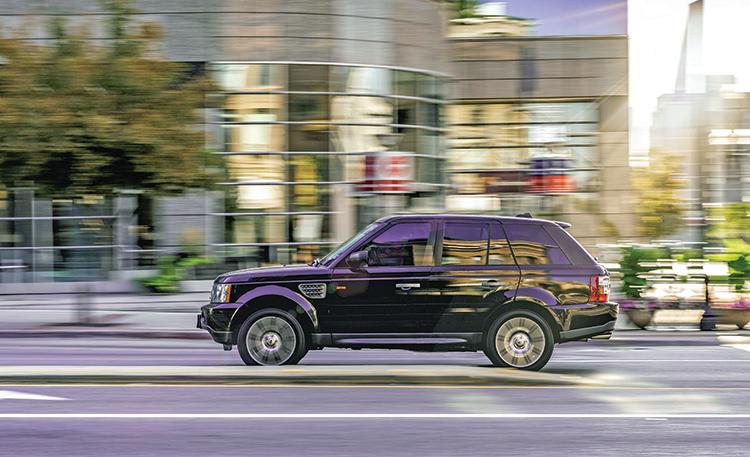
a vehicle can save drivers as much as 14 percent on fuel.
Cruise control is not advisable when driving in cities or on roads with stoplights. However, when driving on interstates, driving at the same continuous speed helps drivers avoid constant
accelerations and decelerations, which compromise fuel efficiency.
When the open road beckons, drivers can make their road trips more affordable by implementing various strategies to conserve fuel.
(METRO CREATIVE)

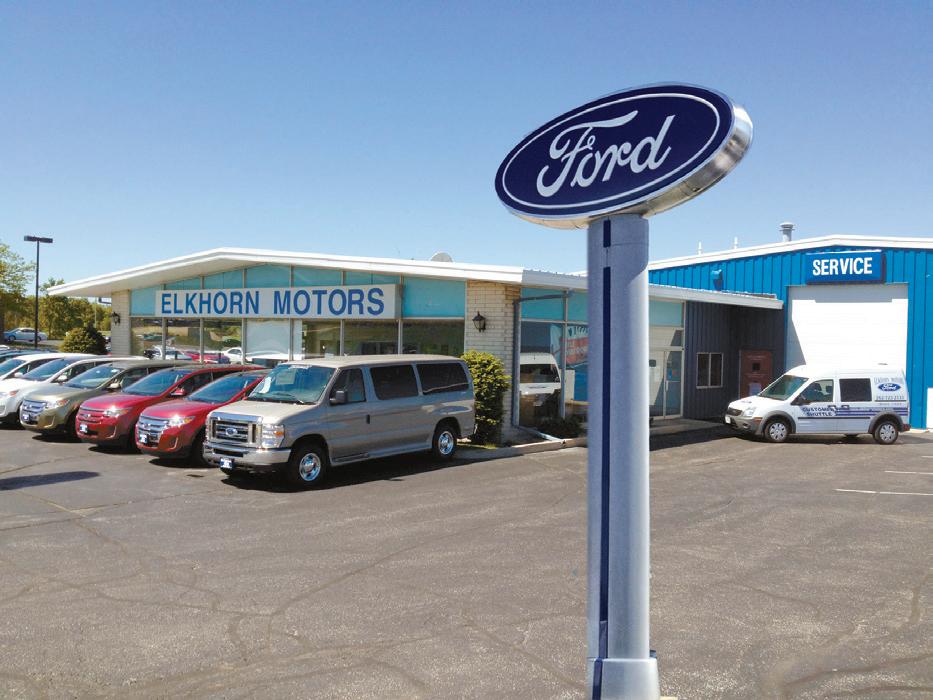
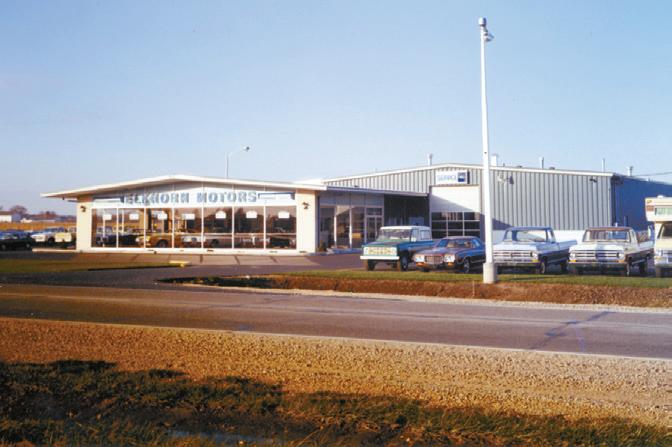



Tidal Wave Auto Spa made a big splash during its recent opening in Burlington.
Touted as one of nation’s fastestgrowing express companies, according to a company news release, Tidal Wave Auto Spa at 357 Wegge Court, Burlington, became the first location in Wisconsin.
The business offered free car washes the first week, but regular rates now apply.
In addition to Burlington, Tidal Wave also opened another location in Texas, based on an announcement made by the company.
“We’re thrilled to add Wisconsin to our footprint and continue growing in Texas,” said Tidal Wave Spa Auto Spa founder and CEO Scott Blackstock in a news release.
“The opportunity to bring our car wash experience to more folks is what it’s all about, and we’re excited to join the Burlington and Liberty (Texas) communities,” he added.
In 2022, the City of Burlington Plan Commission endorsed a conditional use permit and site plan application for Tidal Wave. The company spent a little more than a year building the facility, which is along the Milwaukee Avenue corridor between Landmark Credit Union and Performance Tire and Auto Service.
The full-service express style car wash also includes several outdoor vacuum bays for customer use.
Corporate trainer Evan Williams said Tidal Wave Auto Spa in Burlington served hundreds of vehicles in the first week of business in mid-February.
“We ran a bunch of cars in and had a great time,” Williams said, adding that about 120 vehicles went through the car wash opening day.
Williams said area residents, including customers who visited the new wash, have welcomed Tidal Wave into the community.
“All of the people here are super nice,” he said. “I’m excited.”
Tidal Wave plans to further expand operations in Wisconsin.
According to a company news release, Tidal Wave will open facilities in Beaver Dam, Platteville, Marshfield, and Weston later this year.
Company officials said Tidal Wave Auto Spa remains committed to offering customers with an exceptional car wash experience through industry-leading care technology, clean and attractive locations, and friendly customer service at every location.
Williams reiterated the company’s mission while on site in Burlington.
“We actually care about how our cars come out,” he said. “Our competitors just throw the car through, throw some suds on it and call it a car wash.”
As for the company’s continued expansion, Williams attributes the growth to quality customer service, explaining that employees take pride in helping vehicle owners.
“We take care of our customers, and we make things right,” he said. “We are in multiple states now. We are pushing on


230-plus sites and we have dozens more in development.”
Williams said at the time Tidal Wave in Burlington was hiring and encouraged anyone in need of a job to apply.
Through his experiences with other grand openings nationwide, Williams noted the company promotes a culture of family, adding that he has formed strong relationships with employees.
“If you are looking for job, come and apply because we like to have our family ever growing,” he said. “A lot of people have turned this into a career because we are very welcoming and have a family-

oriented culture,” he added.
Tidal Wave Auto Spa was founded by Scott and Hope Blackstock in Georgia. The company currently has more than 230 locations in the nation spanning 24 states in several regions of the country.
The company received recognition as a 2023 Champion of Charity Honoree by Professional Carwashing and Detailing and has raised more than $3 million for organizations in their communities.
Customers can stop in for a single wash,
or join Tidal Wave’s Clean Club, which enables more benefits to members.
Members can wash every day of the month for one convenient monthly payment while saving time with exclusive club member wash lanes, and memberships can be used at any Tidal Wave location, according to a news release.
Additionally, the company offers family plans for those with multiple vehicles, as well as fleet plans for businesses with five or more vehicles.
For more information, including details on fleet plans, prices and more, visit www. tidalwaveautospa.com/.

Buying a new car is no small task. When shopping for a new car, it’s easy to let details like the color of the vehicle and creature comforts like connectivity take control of the transaction, but buyers also know how important the bottom line can be.
Next to a home, a car might be the most expensive item many consumers ever purchase. In fact, according to Cox Automotive, the average transaction price of a new vehicle in the United States in early 2023 was just over $48,000.
A lot of money changes hands at car dealerships every day, so buyers can undoubtedly benefit from learning or relearning the lingo that surrounds such transactions.
The Consumer Financial Protection Bureau notes that APR is the cost consumers pay each year to borrow money. This includes fees and buyers should know that APR is different from the interest rate.
Drivers can negotiate a lower APR, and the CFPB notes that it can benefit buyers to compare the APR on competing auto loans.
Prepayment penalties penalize drivers for paying off a loan before it reaches maturity. Though the vast majority of drivers who finance the purchase of a vehicle will not have prepayment penalties in their agreements, buyers with lower credit scores might. Anyone with such a penalty in the
Drivers undoubtedly have noticed their vehicles need less frequent oil changes than cars once required. The longtime standard oil change interval of once every 3,000 miles no longer applies, and that’s thanks to the pivot away from conventional oil to synthetic oil.
The molecular structure of synthetic oil and its ability to perform better at extreme temperature means drivers can now drive significantly longer distances between oil changes.
In fact, Car and Driver notes that synthetic motor oils provide better startup performance and flow at temperatures down to minus-40 Fahrenheit and then endure extremely high temperatures without oxidizing, thickening or turning black.
The reason synthetic oils need less frequent changes is that they can maintain their superior properties two to three times longer than conventional oils.
Though each vehicle manufacturer is different, and drivers are urged to consult their owner’s manuals regarding synthetic oil change interval recommendations, it’s not uncommon for modern vehicles to range between 5,000 and 7,000 miles before they need an oil change.
Some synthetic oil manufacturers even note their products can last more than 10,000 miles.
terms of their agreement should try to negotiate it out of the deal.
The balloon payment is a large sum that is due at the end of some auto loans. Many drivers will pay a predetermined amount each month during the terms of the loan. Once that loan reaches maturity, they then own the car outright.
With a balloon loan, buyers still make monthly payments, but when the loan reaches maturity they must make a balloon payment in order to take full ownership of the vehicle.
The online financial resource Investopedia notes that a capitalized cost reduction is any upfront payment that reduces the cost of financing. This can include a cash down payment and a trade-in vehicle.
This familiar acronym stands for “Manufacturer’s Suggested Retail Price.” The MSRP is the total of the base price plus all of the options listed on the window sticker of the vehicle.
Individuals considering leasing their next vehicle will likely come across this term. Car and Driver notes that a closed-end lease is one that gives the driver leasing the vehicle the option to buy it at a set price at the end of the term or walk away without
any financial liability (damage or modifications may result in charges).
Leases typically are closed-end, but it’s still best that drivers confirm prior to signing on the dotted line.
Car and Driver warns that most extended warranties offered by dealerships cover very little, so buyers should read the terms carefully before purchasing an extended warranty.
Extended warranties offered by manufacturers tend to be more useful to buyers.
The lending experts at Capital One note that dealer preparation fees are the charges a dealership issues to prepare a car for transfer to the buyer. These fees might cover the cost of washing the vehicle and additional services before buyers take it off the lot.
Capital One notes these fees average between $100 and $500, and buyers should know that they are negotiable.
The term refers to the length of the purchase or lease agreement. Many leases feature terms between 12 and 36 months, while purchase agreements can feature terms as long as 72 months (six years).
Knowing the lingo before buying a new car can increase the chances drivers get a good deal on their next vehicle.
(METRO CREATIVE)
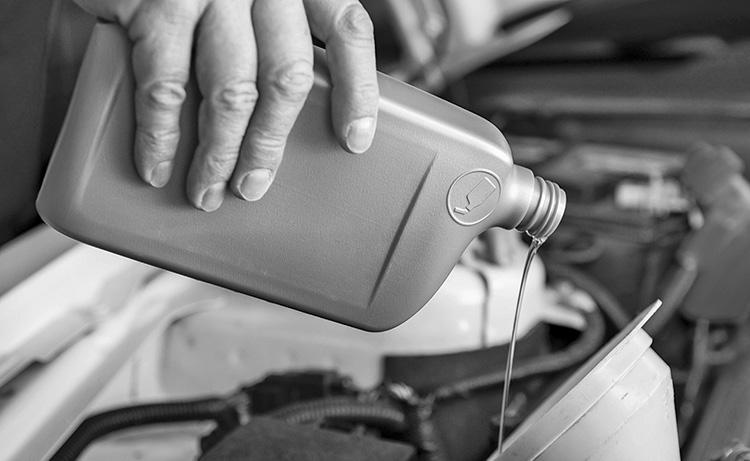
• Continued from Page 3
mechanics around the 50,000-mile marker. It’s unlikely the hoses will make it all the way to 90,000 miles before they need to be replaced, but drivers can keep that mileage marker in mind and aim to replace the hoses before that point even if no issue has arisen.
Timing belts also tend to fail between 80,000 and 100,000 miles, so this is another part to consider replacing as a vehicle reaches this point.
These mileage markers are not set in stone and should only serve as a guideline for drivers who want to stay ahead of vehicle repairs. Drivers also are urged to discuss any additional changes that might be necessary with their mechanics during routine maintenance appointments.
(METRO CREATIVE)• Continued from Page 3
feeling should be brought to the attention of a mechanic immediately.
Tire issues affect vehicle performance and compromise the safety of drivers, their passengers and fellow motorists. When vehicles are not performing at peak capacity, drivers should not overlook various tire issues as a potential cause of such troubles.
(METRO CREATIVE)